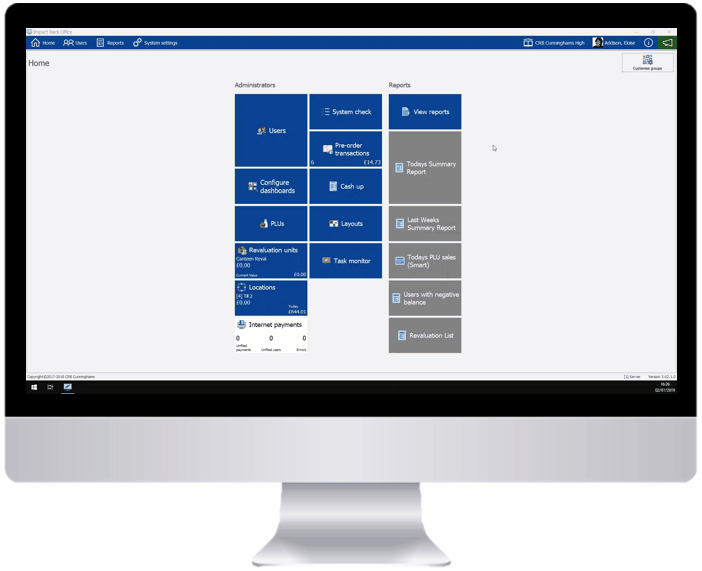Working from home in the education industry
With COVID-19 in full force, many professionals in the education industry are embracing a new style of working that has traditionally only been possible for those working desk jobs. A hot topic over the past few weeks, working from home will be the new norm over the upcoming months for many education professionals who are likely to have little prior experience of working this way.
To help with the transition, we’ve compiled our top working from home tips to ensure that daily professional life continues as usual.
1. Maintain a routine
Humans are creatures of habit, so it’s essential to try and maintain a routine to make each day feel like a ‘normal’ working day. These routines can include starting the day with a (home-based) workout routine, making a nutritious breakfast, getting dressed; by continuing with everyday habits, working from home won’t feel so different to working in the office/ at school after a while.
2. Establish your space
It can be easy to fall into the habit of bringing your laptop onto the sofa or in bed. However, working from spaces typically reserved for leisure and relaxation can make it difficult to switch off at the end of the day.
If possible, set up a dedicated working space with minimal disruption, such as a study, dining room table or anywhere in your home with minimal distractions. You’ll instinctively slip into ‘work mode’ whenever you sit in that space.

3. Take breaks (and move around)
Education professionals are often overworked and can find taking breaks without distractions from colleagues and pupils challenging. Working from home can be an excellent opportunity to encourage regular intervals without distractions from pupils.
Make sure to rest your eyes and take regular breaks away from your computer to improve your posture and sustain frequent activity.
4. Set and stick to your goals
In a crisis, it’s natural to feel panicked and uncertain. However, even with most children off school, try to set achievable goals for yourself, staff and pupils, whether that’s in the form of e-learning, reading, writing, reporting and more.
If you require resources, tools and specific hardware, please don’t hesitate to contact CRB Cunninghams, and we will be happy to help.
5. Plan ahead
During these uncertain times, it’s easy to fall into the trap of excessive short-term thinking. Schedule some time to plan your workload for the following weeks and months, even for September when children return to school.
Working from home presents councils and catering staff with the perfect opportunity to monitor food trends from the current and past year to see the types of food children have been ordering and which foods have been the least popular.
CRB Cunningham's Fusion cashless catering system enables school staff to monitor food trends and reporting. Staff at the school or from the council head office can review food trends amongst pupils and use this to determine future decisions, helping to reduce food wastage and save money.

6. Write a daily to-do list
Working from home can often make the days and weeks feel like they blend into one, which is why it's essential to set precise tasks each day and establish clear responsibilities to complete each day. A straightforward way of doing this is by utilising online tools such as Trello and Asana, which provide platforms for personal to-do lists and can help improve your organisation.
7. Ask for support when needed
While remote working, many people can get used to minimal interaction and often feel the need to tackle specific tasks independently. It's important to remember that your colleagues are in the same situation and are still available for help; therefore, continue to remain in regular contact and ask for help when needed, which includes the team at CRB Cunninghams.
Business at CRBC will continue as usual; therefore, whether you require help from customer service, sales, research and development or marketing, we're just a phone call or email away.
8. Foster relationships
Working from home can test our ability to maintain and foster relationships with customers and colleagues, primarily if everyone works on different schedules.
Book regular catch-ups with customers to provide relevant updates. Use tools such as Microsoft Teams to speak to colleagues, show that you're there for support, and make your workload visible to others to let people know when you're available for catch-ups and meetings.
Professionals can maintain meaningful relationships by establishing regular verbal and written communication and ensuring everyone knows that you're still available as you were when you were school/office-based.
9. Equip yourself with the right technology
To ensure that your transition from working in the office/school to home is as seamless as possible, make sure that you're set up with the right technology as soon as possible. Essential working from home systems includes a laptop, monitor and keyboard (if necessary), phone system, access to the relevant services, and of course, connection to your Wi-Fi.
10. Set aside time for virtual socialising
One of the many benefits of working within a team is the social aspect; whether discussing weekend plans, sharing cute pictures of pets or simply having a general catch-up, daily social interaction can be vital for our sanity.
Even though working from home means no face-to-face interaction with colleagues, with modern technology, it's still possible to socialise with colleagues during breaks via tools such as Microsoft Teams, Zoom, Google Hangouts and more.
Coronavirus has thrown many of us into a state of uncertainty. However, with the ability to work from home, maintaining a productive working from home routine can be straightforward. For more resources, visit our blog and stay tuned for upcoming webinars!




















